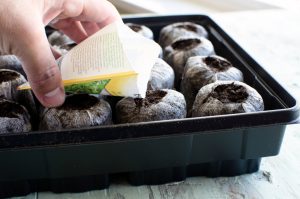February is here, and it has brought along a humdrum feeling. The holidays are no longer here, and spring still seems so far away – even if some of the groundhogs said it would be here early. That does not mean that it’s time to ignore your landscaping needs. February is an excellent month to get prepping for the coming spring as there usually are some mild days that give you a glimpse of what is to come before Old Man Winter comes roaring back. Come March, you’ll be busy with all of your seedlings and spring activities.
 Cleaning and Maintenance
Cleaning and Maintenance
It might not sound fun, but cleaning up around your sheds, garage, and garden as early as February is a good idea. Once spring hits, you don’t want to be spending a great deal of time with cleaning. You’d much rather be working outside in the sunshine or just enjoying nature after being cooped up in the house for so long. Late winter is also a great time of year to start oiling and sharpening any of your gardening tools so that they are ready to go when you need them. This maintenance will help you save money. Equipment that is well taken care of will inevitably last longer.
Pruning
It might be easy to think that pruning shouldn’t be done in the winter months, but that is not the case. You just want to be sure that you are pruning the right shrubs and bushes before spring. Any of your summer blooming shrubs can be pruned at this time, such as your shrub hydrangeas, but do not prune your spring blooming shrubs. If you do, you will be cutting the buds, and will not have any flowers on your shrub in the spring. Shrubs like quince, forsythia, and spirea should be pruned after they have flowered in the spring, and before the fall when they set the buds for next year. Mixing this up may cause you to have a less-than-delightful flower display.
Fertilizing
If you did not fertilize your trees last fall, you should give them a good feeding now. This can be accomplished by putting holes about one to two inches in size and about two feet apart along the drip line. Fill these with the proper fertilizer to ensure healthy trees come spring.
Towards the middle or end of the month, you can also start to fertilize your evergreens, shrubs, and roses. Make sure to use the right type of fertilizer for each type of plants such as an all-purpose fertilizer for your roses and deciduous shrubs. Follow the instructions closely on the one that you use, as some may need to be watered thoroughly or placed in a specific area. For instance, fertilizer on wet leaves can cause fertilizer burn.
Planting
As you are more than likely in zone five through seven, you can get some outdoor planting done – provided that the ground is not frozen. Plants like peas, spinach, and radishes that don’t mind the cold can be sowed outdoors. As long as you keep them under cover, you should be enjoying some fresh treats from your garden sooner than you’d imagine. You should wait until the first crocus blooms, and then you can put out cabbage, lettuce, and onions. Covering them on cold nights should keep them protected.
February is also a good time to start those seeds indoors that you know take a while to mature and start setting flowers. Tomatoes and peppers are good choices. You can plant them early in the season, around April, and use protective covers to keep them safe from the early spring cold. Another easy maintenance trick that will help your spring planting is to put down tarps or some type of ground cover over your garden areas to prevent weeds from populating the area before you have a chance to plant there.
Mulching
The nice days of February are also good for mulching. You can mulch around your trees, shrubs, and other parts of your lawn. Using well-composted manure can add extra nutrients to the soil that your soon-to-be awakening plants will enjoy. Plus, adding mulch now can work in your favor as the cold helps to keep the smell down.
Thank you for reading our blog! How can we help you? Contact us today.
